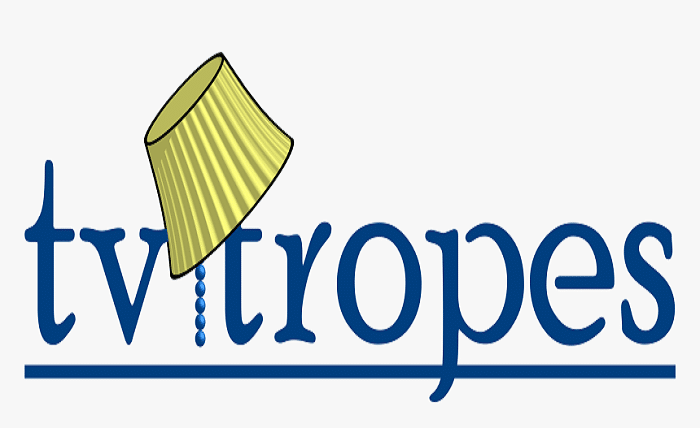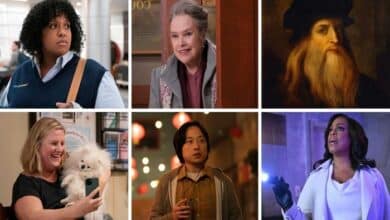TV Tropes: Storytelling Conventions

TV tropes are common storytelling devices, themes, or conventions that appear across various forms of media, especially television. These recurring elements help shape the way stories are told and how audiences perceive them. While some tropes are beloved and become iconic, others might be seen as clichés when overused. However, the use of TV tropes is essential in building familiar, engaging narratives that resonate with viewers. Understanding these tropes can enhance both the appreciation and creation of TV shows, as they serve as shortcuts for conveying ideas, emotions, and character traits.
The Origins of TV Tropes
The concept of TV tropes, like many storytelling elements, has evolved over time. Initially, tropes were seen as devices used by writers and directors to make shows more relatable or engaging. As television storytelling developed, so did the awareness of these recurring conventions. In the 21st century, websites like TVTropes.org became hubs for enthusiasts to catalog, analyze, and discuss the various tropes that appear in popular media. These online communities have made TV tropes a part of everyday conversation, allowing fans to recognize and reflect on the patterns they see in shows, films, and other media.
The Most Common TV Tropes
There are many TV tropes, but some are particularly ubiquitous across genres. For example, the “Reluctant Hero” trope often involves a character who is initially unwilling to take on a heroic role but is eventually drawn into the action. Another common trope is the “Love Triangle,” which creates dramatic tension between three characters who are romantically involved. “The Mentor” is a trope in which a seasoned character guides a younger, inexperienced protagonist. These are just a few examples of how TV tropes help shape narratives and make stories more predictable or engaging.
How TV Tropes Shape Audience Expectations
TV tropes are essential for setting up audience expectations. When a viewer starts watching a show, they immediately begin recognizing familiar tropes and conventions, which help them understand the narrative’s direction. This allows writers to subvert expectations, play with established patterns, or reinforce beloved storytelling devices. For example, a TV show might use the “Red Herring” trope, where a character or plot point is introduced to mislead the audience, only to be revealed as irrelevant. Such tropes keep the audience engaged, as they anticipate what will happen next while enjoying the twists and turns the show offers.
TV Tropes in Different Genres
Different genres of television tend to use specific TV tropes to build their narratives. In action and adventure genres, tropes like the “Chosen One” or “Team of Misfits” are commonly employed to drive the plot. In romance shows, tropes like “Forbidden Love” and “Enemies to Lovers” frequently appear to fuel the drama. Comedy series often rely on tropes such as the “Straight Man” or “Clownish Character” to create humor through their interactions. Science fiction and fantasy genres make heavy use of tropes like “The Prophecy” or “World of Wonders” to build immersive and imaginative settings.
The Role of TV Tropes in Character Development
TV tropes are not just about plot devices; they also play a significant role in shaping characters. For instance, the “Anti-Hero” trope involves a protagonist who lacks traditional heroic qualities, yet still becomes the central figure of the story. The “Damsel in Distress” trope, on the other hand, often portrays female characters as helpless, requiring rescue. While some of these tropes have been criticized for their stereotypical nature, they continue to appear because they resonate with audience expectations and serve as quick ways to develop character dynamics. Writers often deconstruct or subvert these tropes to create more complex and nuanced characters.
TV Tropes and Their Impact on Storytelling
TV tropes influence not just the structure of a story but the overall tone and message of a show. Tropes like “The Chosen One” often carry themes of destiny and self-discovery, while “The Hero’s Journey” trope focuses on personal transformation through trials and challenges. These storytelling conventions provide a framework within which shows can explore deeper themes and character growth. However, overusing certain tropes can lead to formulaic storytelling, so many modern writers aim to innovate by blending tropes or subverting expectations.
Subverting TV Tropes
One of the most engaging aspects of modern television is the ability to subvert TV tropes. Writers play with familiar tropes, intentionally breaking or twisting them to surprise the audience. For example, a “Damsel in Distress” trope might be subverted by having the character rescue themselves or take on a more active role in their rescue. Subverting TV tropes not only keeps the audience engaged but also reflects evolving cultural attitudes. This shift can challenge traditional gender roles, race stereotypes, and societal expectations that tropes often reinforce.
The Popularity of TV Tropes Online
The internet has played a crucial role in popularizing TV tropes. Websites like TVTropes.org have created communities where fans can contribute to the identification and analysis of tropes across a vast array of media. These platforms allow viewers to explore tropes beyond television, including film, literature, video games, and anime. The popularity of these websites highlights the deep connection that fans have with TV tropes, enabling them to discuss, share, and critique how tropes shape their favorite shows. As a result, understanding TV tropes has become part of modern media literacy.
How TV Tropes Influence Writing and Filmmaking
For writers and filmmakers, understanding TV tropes is an essential part of crafting compelling narratives. Tropes provide a shorthand for quickly establishing characters, settings, and conflicts, making it easier to communicate a story to an audience. Filmmakers can use these familiar devices to create emotional moments, comedic relief, or dramatic tension. However, the key to successful use of TV tropes lies in how they are employed. Skilled writers know when to embrace a trope and when to subvert or twist it to create something fresh. This balance is what keeps TV shows interesting and unpredictable.
Conclusion
TV tropes are an integral part of storytelling that help shape how audiences interact with narratives. From creating relatable characters to driving plot progression, tropes serve as building blocks for many television shows. While some tropes can become predictable or overused, they remain powerful tools for writers and show creators. As audiences grow more aware of these conventions, TV shows continue to evolve, offering new ways to engage with familiar tropes or subvert them entirely. Whether you’re a casual viewer or a dedicated fan, understanding TV tropes enhances your appreciation of the stories you watch.
FAQs
What is the definition of a TV trope?
A TV trope is a recurring storytelling device, theme, or convention that appears in television shows, films, and other media.
Why do writers use TV tropes?
Writers use TV tropes as shortcuts to quickly establish characters, settings, and conflicts, making the story more relatable to the audience.
Are TV tropes always negative?
No, not all TV tropes are negative. Many beloved tropes help build emotionally engaging stories, but overuse can make them feel predictable.
Can TV tropes be subverted?
Yes, many TV tropes are intentionally subverted by writers to surprise audiences or challenge traditional narrative conventions.
Where can I find TV tropes online?
Websites like TVTropes.org catalog and analyze TV tropes across various media, allowing users to explore and discuss their favorite conventions.




